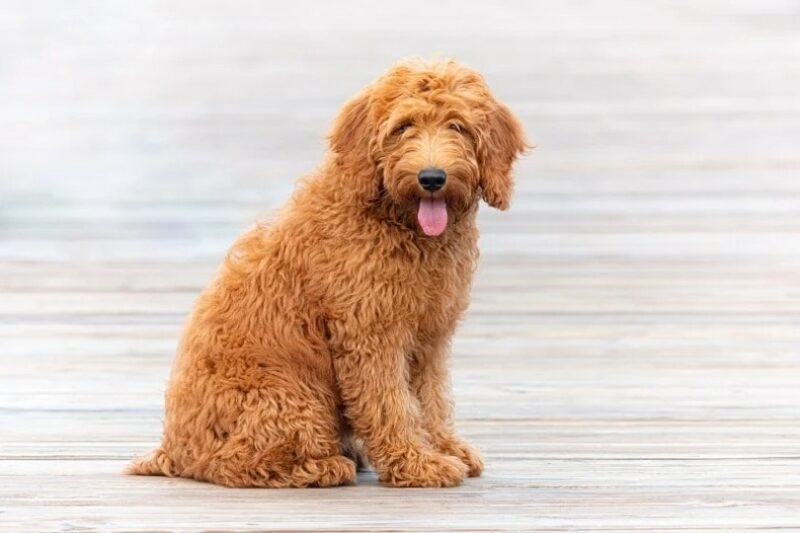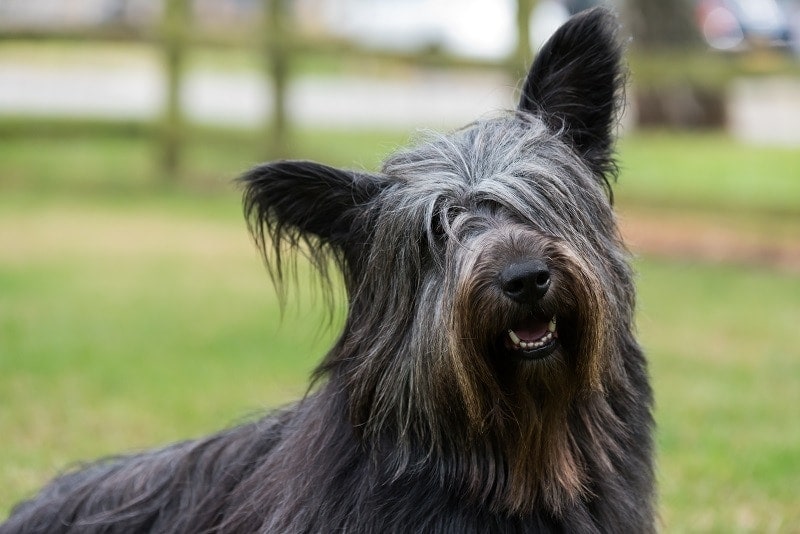16 Spitz Dog Breeds: An Overview (With Pictures)

Updated on
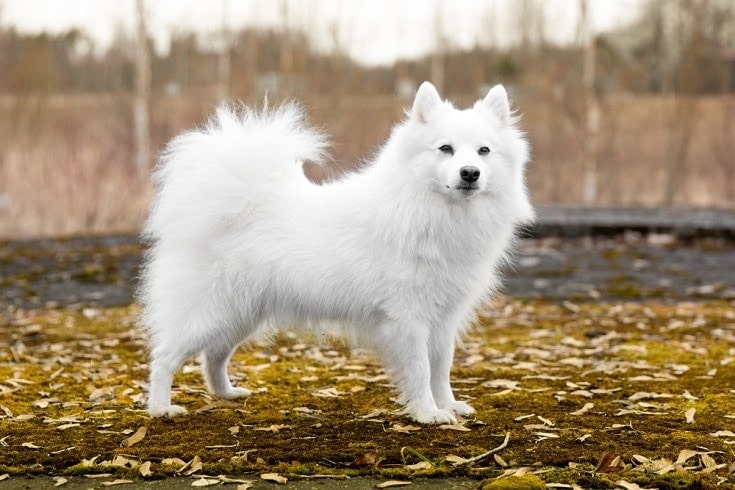
Click to Skip Ahead
Recognized by their wolf-like faces, thick fur, curled tails, and pointed ears, spitz-type dogs are adored as working breeds and companions. They can range in size from the tiny Pomeranian to the fluffy Samoyed. These dogs also have similar origin stories, with most breeds originating in the cold Arctic regions.
There are many spitz breeds to keep track of, and some of them might even surprise you! This list splits 16 spitz dog breeds into American, Asian, and European categories to give you an idea of how widespread they are among various countries.
The 16 Spitz Dog Breeds
American Spitz Dog Breed
1. Alaskan Malamute
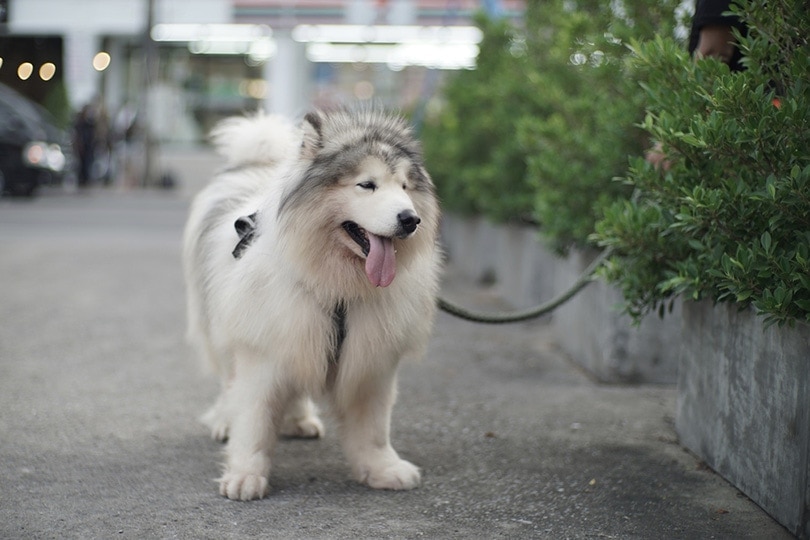
| Origin: | Alaska |
| Lifespan: | 10–14 years |
| Temperament: | Loyal, playful, affectionate |
One of the oldest Arctic sled dogs is the Alaskan Malamute. Unlike the Siberian Husky, which pulls light sleds at great speeds, the Alaskan Malamute was bred to haul heavy loads over long distances. They weren’t just relied upon for their strength and stamina, though; they also carried cargo in summer, located seal breathing holes, and distracted bears during hunts.
The Alaskan Malamute, like other Malamute dog breeds, gets their name from the Inuit people, the Mahlemiut, who lived in Kotzebue Sound.
The 5 Asian Spitz Dog Breeds
2. Akita

| Origin: | Japan |
| Lifespan: | 10–14 years |
| Temperament: | Loyal, dignified, courageous |
Developed in Japan during the early 17th century, the Akita is prized as a symbol of good health and happiness and adored as a family protector in Japan and across the world. They were originally introduced by a banished nobleman who was exiled to the island of Honshu. The nobleman and the barons he ruled over began working on a versatile hunting dog, and the Akita is the result of their efforts.
These days, the Akita has a rich and varied history. Despite almost going extinct on several occasions, when American soldiers returned home from World War II with these loyal dogs, their popularity grew exponentially.
3. Chow Chow
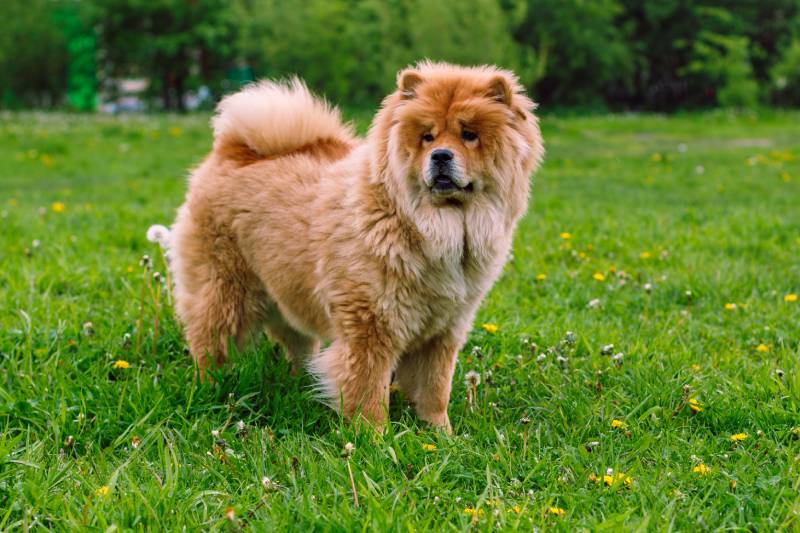
| Origin: | China |
| Lifespan: | 8–12 years |
| Temperament: | Dignified, intelligent, serious |
Many of the oldest dog breeds in the world originated in China, and the Chow Chow is considered to be one of the building blocks of the spitz breed. Favored by the imperial court, the Chow Chow was bred to be a regal companion for the Chinese nobility. It’s said that a Tang Dynasty emperor during the 8th century owned 5,000 Chow Chows and employed twice as many staff to look after them all.
These dogs are more versatile than you might think from their noble roots. They’ve also had jobs in guarding, hauling cargo, and hunting. Their introduction to the West occurred in the 1820s via the “Wild Dogs of China” exhibit at the London Zoo. It was only when Queen Victoria fell in love with the breed that the Chow Chow became popular in the West too.
4. Samoyed
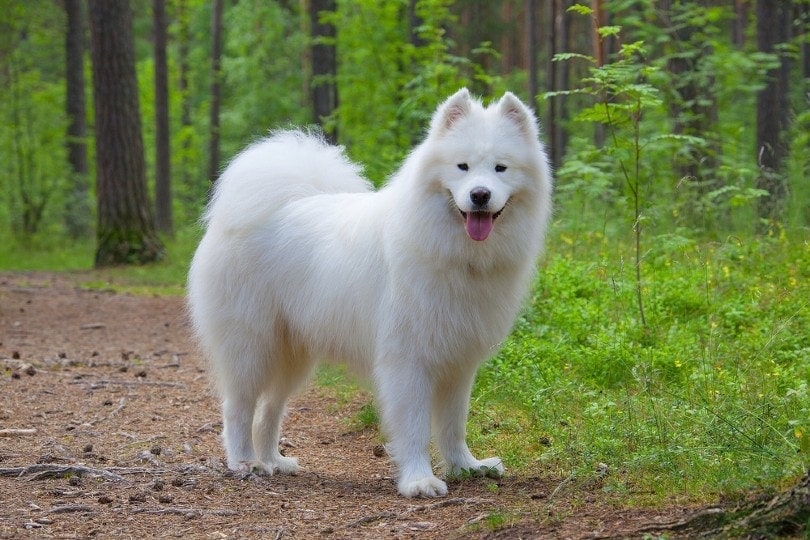
| Origin: | Siberia |
| Lifespan: | 12–14 years |
| Temperament: | Adaptable, friendly, gentle |
Named after the semi-nomadic Samoyedic (or Samodeic) people, the Samoyed was developed to be a working dog capable of withstanding the cold climate of Siberia. Their thick double coat and loyalty to humans made them perfect companions in the coldest regions of the world.
Samoyed dogs didn’t just help keep their human family members warm in cold tents, though; they were also used as sled dogs, guardians, and hunters. They became herders when their people began herding reindeer instead of hunting them.
The breed was introduced to England in the late 18th century. Although it doesn’t get as cold as Siberia in many parts of the world, the Samoyed is still a beloved companion for many.
5. Shiba Inu
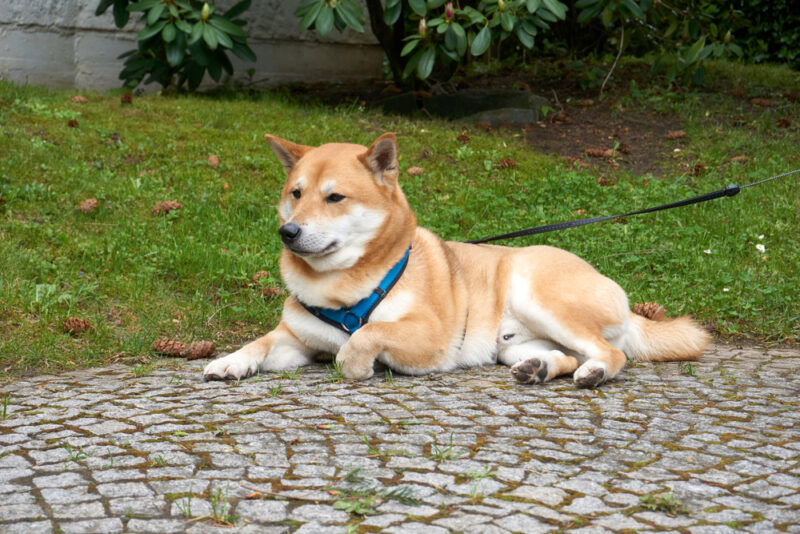
| Origin: | Japan |
| Lifespan: | 13–16 years |
| Temperament: | Active, alert, attentive |
In Japan, the Shiba Inu has been the most popular companion dog since World War II. They were introduced to the U.S.A. by a military family in 1954, and although they’re growing in popularity, they haven’t quite reached the same standing here as they have in Japan.
Translated to “brushwood dog” due to the brushwood in the mountains or the reddish coloring of their fur, the Shiba Inu was a hunting companion. They retain the sturdy, muscular statures of their hunter ancestors today, but their duties are now to be family dogs in urban and rural homes.
6. Siberian Husky
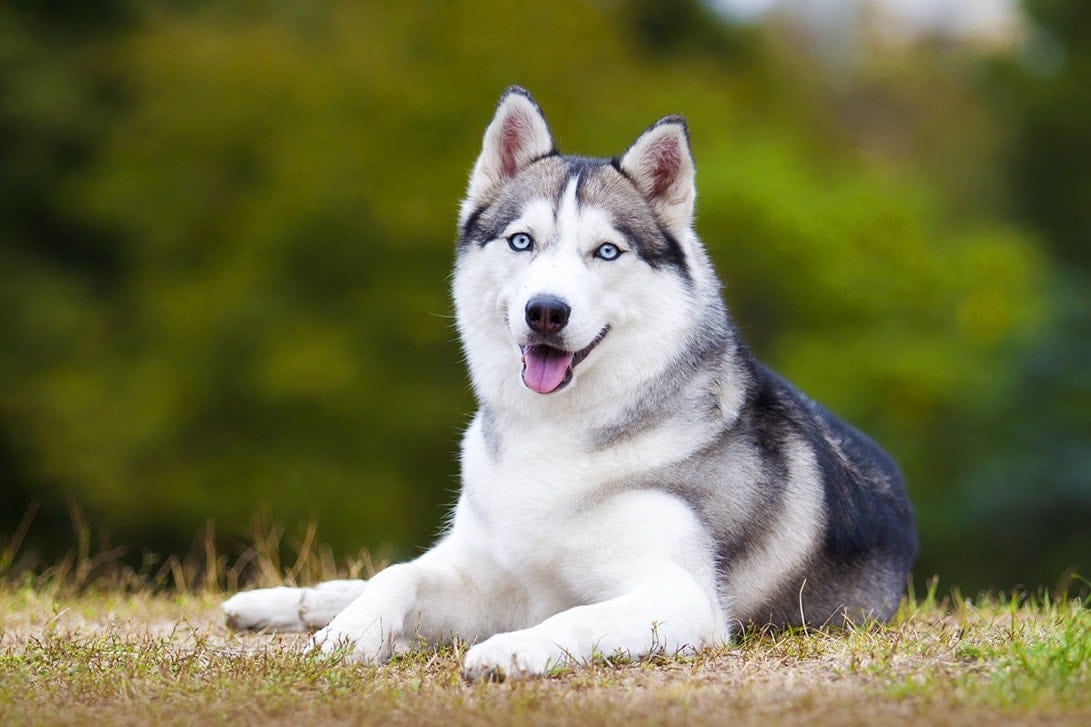
| Origin: | Siberia |
| Lifespan: | 12–14 years |
| Temperament: | Loyal, mischievous, outgoing |
Smaller and lighter than the Alaskan Malamute, the Siberian Husky was bred by the Chukchi people in northeastern Asia for their speed and strength. Where their large cousins excelled at slow speeds and heavy loads, the Siberian Husky was favored for fast runs.
One of the most famous heroes in the dog world is a Siberian Husky called Balto. Guided by the musher Leonhard Seppala, Balto led a team of medicine-carrying dogs on the final stretch of their journey to Nome, Alaska, when an outbreak of diphtheria threatened to ruin the town. Since then, the Siberian Husky has been one of the most beloved dogs in the world.
10 European Spitz Dog Breeds
7. American Eskimo Dog
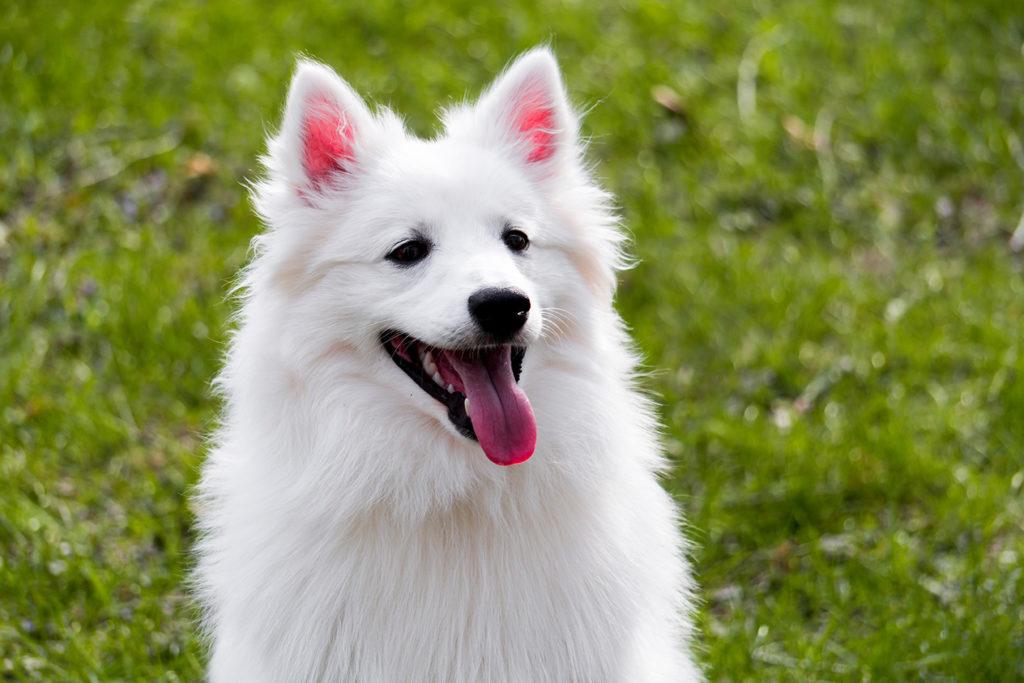
| Origin: | Germany |
| Lifespan: | 13–15 years |
| Temperament: | Loyal, smart, versatile |
The American Eskimo Dog can be likened to a miniature Samoyed due to their small size and thick, white fur. Despite their name, though, they have nothing to do with the Inuit people, and they didn’t technically originate in America.
Although their actual origin story is uncertain, they were popular among German immigrants during the 1800s. The German Spitz, which the American Eskimo Dog is believed to be descended from, was a versatile farm dog that became well-loved on the show circuit at the end of the 19th century.
These dogs were renamed the American Eskimo Dog during World War I due to the U.S.A.’s growing prejudice against Germany. Today, they retain their separate breed standard.
8. Finnish Lapphund

| Origin: | Finland |
| Lifespan: | 12–15 years |
| Temperament: | Agile, alert, friendly |
Herding reindeer requires dogs to have courage, agility, and intelligence, as well as a thick double coat and the ability to withstand cold winters. In Finland, the Finnish Lapphund is one of the breeds trusted for this task. They were developed by the nomadic Sami, or Lapp, people who inhabited Lapland centuries ago.
Like many working spitz dogs, the Finnish Lapphund’s ancestors helped keep their pack, canine and human, warm by huddling with them in the tents. This close bond and fierce trust have made these dogs the loyal and friendly companions that they are today.
9. Finnish Spitz
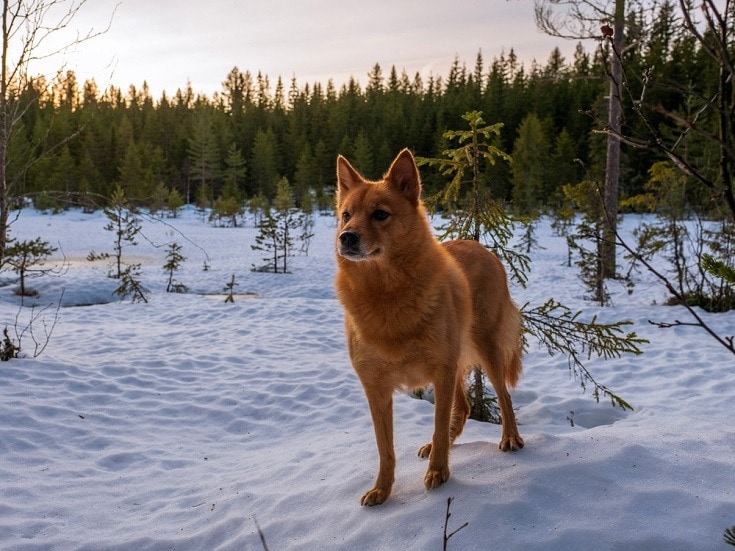
| Origin: | Finland |
| Lifespan: | 13–15 years |
| Temperament: | Friendly, lively, good-natured |
Nicknamed the “Barking Bird Dog” and called the Suomenpystykorva in their native homeland, the Finnish Spitz is Finland’s most popular dog breed. They were initially developed as all-purpose hunters and were particularly adept at hunting birds with their hypnotically wagging tails and rapid-fire bark.
The breed was almost lost completely at the end of the 19th century but was rescued by two Finnish breed fanatics, Hugo Roos and Hugo Sandberg. When the breed was introduced to the U.K., Lady Kitty Ritson gave them the nickname, “Finkie,” which is still in use today.
10. Icelandic Sheepdog
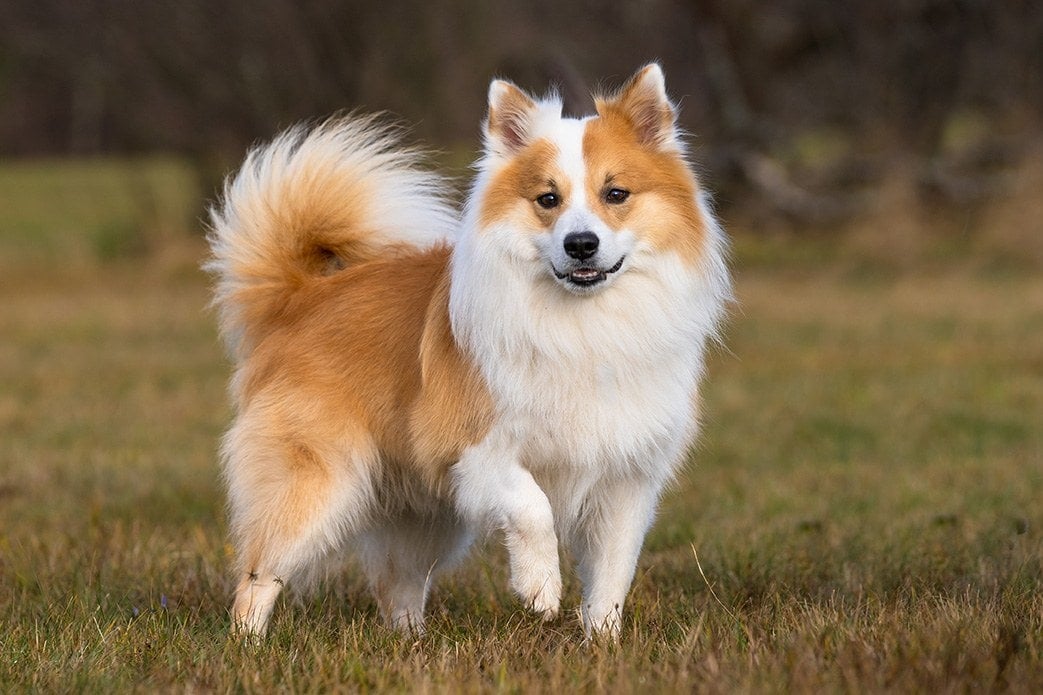
| Origin: | Iceland |
| Lifespan: | 12–14 years |
| Temperament: | Inquisitive, playful, friendly |
Devoted to their family and a dedicated herder, the Icelandic Sheepdog is the only dog breed native to Iceland. They have the same dense coat, fox-like face, pointed ears, and curling tail as other spitz breeds do, though, and are just as friendly.
The Icelandic Sheepdog is descended from the original spitz-type dogs exported from Norway when Iceland was first inhabited. Today, the breed is a national symbol of Iceland and can still be found herding sheep and ponies alongside humans.
11. Keeshond
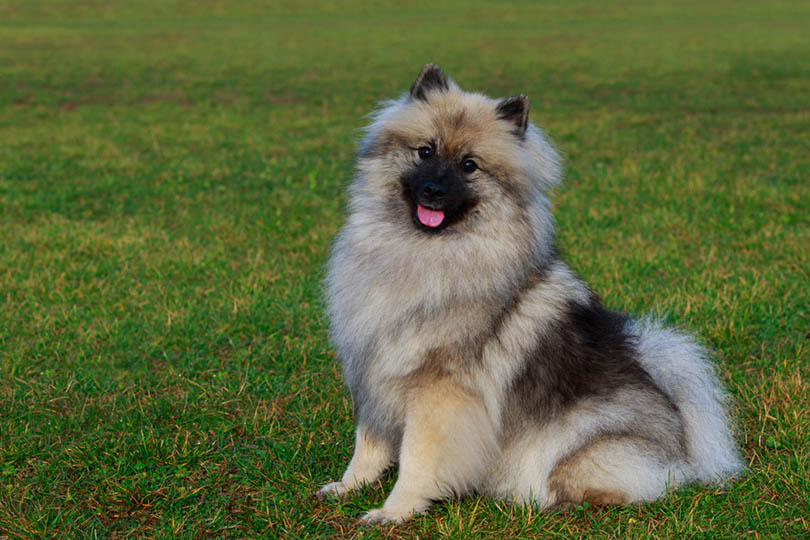
| Origin: | Holland |
| Lifespan: | 12–15 years |
| Temperament: | Lively, outgoing, friendly |
One of many all-purpose dog breeds is the Keeshond, which originated in Holland, though there’s no way of knowing for sure what their full origin story is. Before getting caught up in politics before the French Revolution, particularly the opposition of the House of Orange, the Keeshond worked as barge dogs. They were also watchdogs and companions for the Dutch sailors in the Low Countries.
The Keeshond is a bit of a mystery, especially when it comes to their name. No one quite knows whether they were named after the Patriot mascot dog, Kees, or two Patriot leaders who shared the nickname.
12. Norwegian Buhund
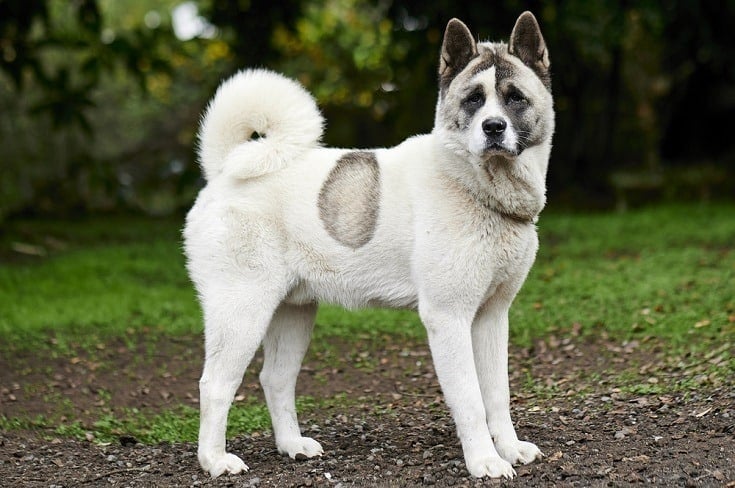
| Origin: | Norway |
| Lifespan: | 12–15 years |
| Temperament: | Confident, perceptive, smart |
Closely associated with the Vikings, the Norwegian Buhund is also known as the Norsk Buhund and the Norwegian Sheepdog. They once sailed alongside the Vikings during the raids of European countries.
These dogs are all-purpose farm dogs, and their name comes from the Norwegian word for farm, Bu. Like many other spitz breeds, the Norwegian Buhund was favored as a watchdog for the family and farm animals. Today, these dogs can still be found doing similar work that their ancestors did. They are confident and affectionate companions.
13. Norwegian Elkhound
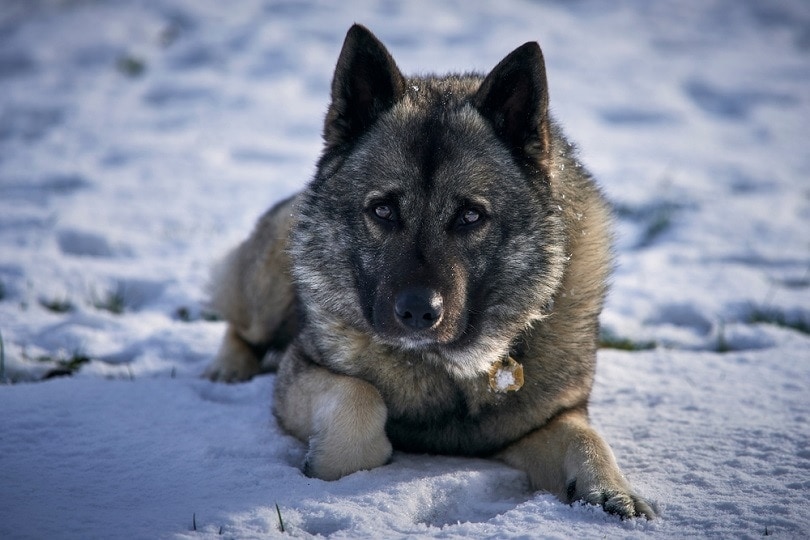
| Origin: | Norway |
| Lifespan: | 12–15 years |
| Temperament: | Confident, friendly, dependable |
As one of Europe’s oldest dog breeds, the Norwegian Elkhound can be traced back to the Vikings. These dogs are alert, steadfast, and intelligent, with a versatility shared with many other spitz breeds.
They are fierce protectors of home and farm animals, are loyal companions, and excel at herding. Similar to the Norwegian Buhund, the Elkhound sailed alongside the Vikings when they invaded the rest of Europe. While the Buhund was primarily a farm worker, though, the Elkhound was bred to be a hunter. They were developed to help their Viking companions hunt elk and moose.
14. Norwegian Lundehund

| Origin: | Norway |
| Lifespan: | 12–15 years |
| Temperament: | Energetic, loyal, alert |
First developed on Vaeroy, a remote island off the coast of Norway, the Norwegian Lundehund has long abandoned their original purpose. They were developed as an agile and light-footed hunter of puffins when the birds were still being hunted for their meat. Since the birds nested on sheer rock faces, the dogs were the only ones that could reach them.
Since the puffin has become a protected species, the Lundehund has lost their original purpose, but they haven’t lost their loyalty to their human family. They also use their agility and energy to excel in competitions.
15. Pomeranian

| Origin: | Pomerania (Poland and Western Germany) |
| Lifespan: | 12–16 years |
| Temperament: | Bold, inquisitive, lively |
The Pomeranian has always been a companion breed, but they’re also fiercely protective of their family members. They are fluffy and adorable and rely on their big, puppy-dog eyes to get out of trouble.
They are closely related to Arctic sled dogs, albeit on a smaller scale. Compared to the other spitz breeds, the Pomeranian is the smallest. What they lack in size, though, they make up for in spirit. These dogs were also a favorite of Queen Victoria, who was credited for making the Pomeranian the toy breed that they are today.
16. Swedish Valhund

| Origin: | Sweden |
| Lifespan: | 12–15 years |
| Temperament: | Alert, energetic, friendly |
When the Vikings invaded Britain between the 8th and 11th centuries, they bred their Scandinavian spitz dogs with Welsh Corgis. This mix is believed to be the basis of the Swedish Valhund, a breed that was further developed in western Sweden as a cattle dog. These dogs are full of energy, cheerful, and highly intelligent.
The Swedish Valhund, like many other Nordic breeds that were introduced by the Vikings, is at home in the fields and during voyages across the ocean.
Conclusion
Versatile and affectionate, spitz-type dogs are renowned for their work ethic and their loyalty to humans. The breeds are recognized by their thick double coats, curled tails, wolf-like faces, and pointed ears. While they have similar appearances, their histories vary, and they’ve been companions of royalty like the Chow Chow, dedicated sled dogs like the Siberian Husky, and protectors of reindeer herds like the Norwegian Buhund.
See also:
- Jindo Spitz Mix: Pictures, Care Guide, Temperament & Traits
- 6 Japanese Dog Breeds Native to the Islands (With Pictures)
Featured Image Credit: Lisjatina, Shutterstock


